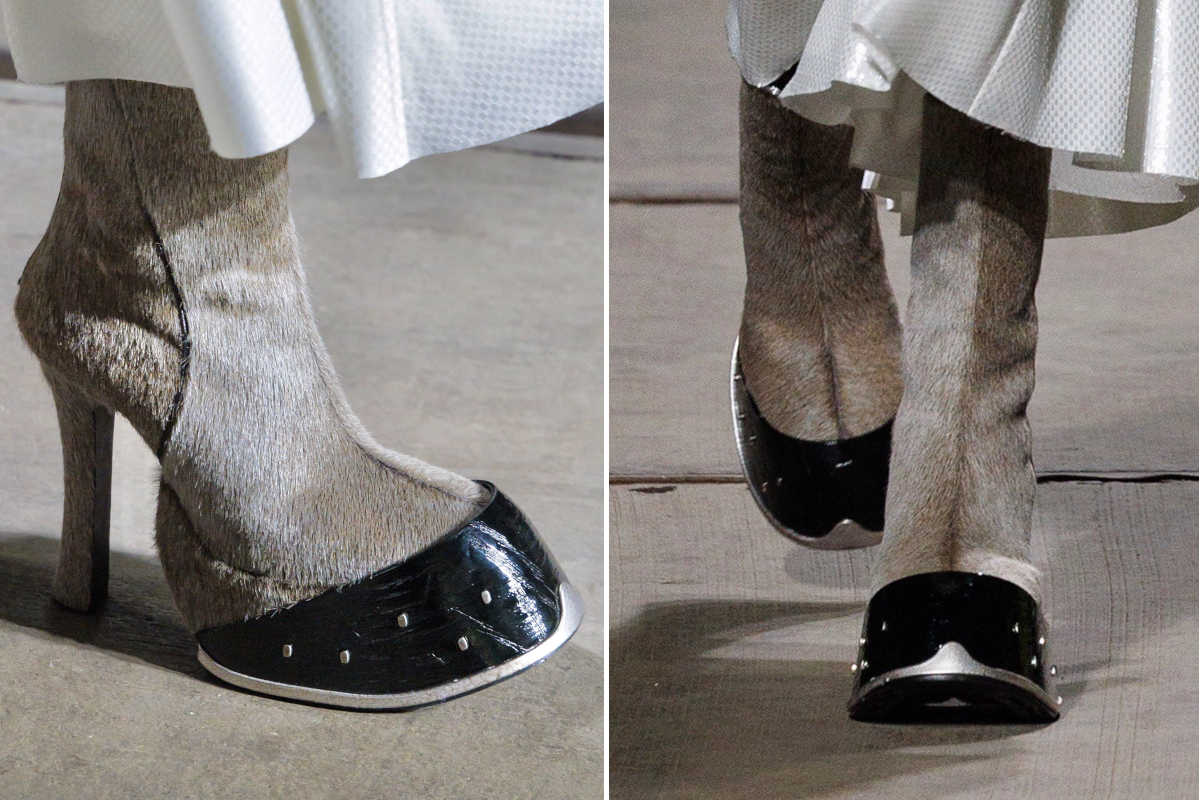The “Hoof Boots”, boots that imitate the features of horse hooves, caused outrage: did we really need them, especially at an insane price?

@gastt_fashion/X
The FW24 collection from Alexander McQueen, under the new creative direction of Seán McGirr, has already sparked controversy with a bold move: the “Hoof Boots“. These boots, designed to resemble horse hooves, have become one of the most talked-about elements of the show, igniting a heated debate among fashion enthusiasts and critics alike.
A return to provocation
The show, held in an abandoned railway warehouse on the outskirts of Paris, saw a return to the bold and provocative style characteristic of Lee McQueen. However, McGirr’s decision to introduce boots that mimic horse hooves has caused public outcry.
The “Hoof Boots”, available in brown leather with studs and silver accents, as well as a black version with a horse tail cascading from the heel, appear to be a deliberate attempt to challenge traditional fashion norms. While some view these boots as a creative innovation breaking conventions, others see them as an exercise in eccentricity, more designed to shock than to set new trends.
Prices range from $2,630 to $2,960
One of the most critical aspects of these boots is their high price. With a price tag of $2,630 for the brown version and $2,960 for the black version with a mane, these boots are clearly aimed at an elite audience. This raises questions about the future direction of the brand under McGirr’s leadership: is this a strategy to solidify McQueen’s image as an inaccessible luxury brand, or an attempt to provoke and challenge fashion norms?
McGirr’s statements that the inspiration comes from childhood memories and local farmers in his hometown have done little to quell the controversy. Despite this romantic narrative, doubts remain about whether such creations can find a practical place in consumers’ everyday wardrobes.
In essence, while the FW24 “Hoof Boots” from Alexander McQueen represent a return to the provocation and eccentricity that have always defined the brand, the question remains: did we really need them?
